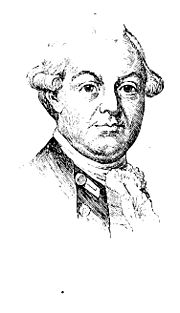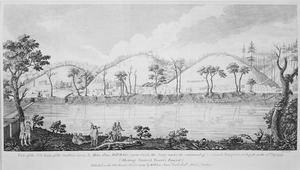Simon Fraser of Balnain facts for kids
Quick facts for kids
Simon Fraser
|
|
|---|---|

General Simon Fraser
|
|
| Born | 26 May 1729 Balnain, Inverness-shire, Scotland |
| Died | 7 October 1777 (aged 48) Bemis Heights, Saratoga, Province of New York, Great Britain |
| Buried | |
| Allegiance | |
| Service/ |
|
| Rank | Brigadier-General |
| Unit | 24th Regiment of Foot |
| Battles/wars | |
Simon Fraser (born 1729, died 7 October 1777) was a British general who fought during the American War of Independence. He was sadly killed in the Battle of Bemis Heights, which was part of the important Saratoga Campaign. Many believe that Timothy Murphy, a skilled rifleman, fired the shot that killed General Fraser.
Contents
Early Life and Military Career
Simon Fraser was born on 26 May 1729. His father was Alexander Fraser of Balnain. Simon's family had a long history in Scotland.
When he was young, Simon fought with the Dutch army in 1747. He joined the British Army as a lieutenant in 1755. This was the start of his long military career.
Fighting in Canada
Fraser traveled to Canada with British forces during the French and Indian War. He took part in the Siege of Louisbourg in 1758. He was promoted to captain before the Battle of Quebec in 1759.
During the Battle of Quebec, Fraser was in General James Wolfe's boat. He helped the British sneak ashore by speaking French through the fog. This allowed them to reach the Plains of Abraham for a surprise attack.
After these wars, Fraser served in different places. These included Germany, Ireland, and Gibraltar. In 1768, he became the Lieutenant Colonel of the 24th Regiment of Foot.
American War of Independence
In 1776, Fraser's 24th Regiment was sent to Quebec. This was because the Americans had tried to invade Canada. Governor Guy Carleton then promoted Fraser to Brigadier General.
When General John Burgoyne planned his Saratoga campaign in 1777, Fraser was chosen for a very important job. He was to lead the advance unit. This unit would go ahead of the main army.
Taking Fort Ticonderoga
At the start of the Saratoga campaign, Fraser's advance corps had about 1,000 soldiers. This included his own 24th Regiment, special grenadier and light infantry battalions, and skilled marksmen. They also had Canadian militia and First Nations helpers.
Fraser's command was at the front during the taking of Fort Ticonderoga. He helped push back the American soldiers who were retreating.
Battle of Hubbardton
On 7 July 1777, Fraser's troops caught up with the American rear guard. This happened near the town of Hubbardton in Vermont. In the Battle of Hubbardton, Fraser's forces fought hard. They managed to drive off the enemy. However, they lost many of their own men in the fight.
Battle of Freeman's Farm
At the Battle of Freeman's Farm on 19 September, Fraser led the right side of the British army. He successfully led four companies in an attack. They pushed back Daniel Morgan's skilled riflemen.
Final Battle at Bemis Heights
During the Battle of Bemis Heights on 7 October 1777, General Fraser was shot. He was hit by rifle fire from Daniel Morgan's rifle brigade. It is said that Benedict Arnold specifically ordered a rifleman named Timothy Murphy to target Fraser. This was because Fraser was bravely leading and supporting his troops.
Fraser was carried to a nearby house. He was cared for by Baroness Riedesel. He died there that evening. He was reportedly buried in a nearby fort, but the exact spot is not known for sure. Baroness Riedesel wrote in her diary that he was "...buried at six o'clock in the evening, on a hill, which was a sort of redoubt."
A drawing by the artist Barlow shows Fraser being buried at the fort. This matches what Baroness Riedesel wrote. Barlow's drawing shows two coffins being carried. The second coffin was likely for Sir Francis Clerke, who was also killed that day. Clerke was an aide to General John Burgoyne. He was shot by Morgan's riflemen while delivering orders.
Today, there is a memorial plaque for Fraser at the Saratoga Battlefield National Park.
See also


